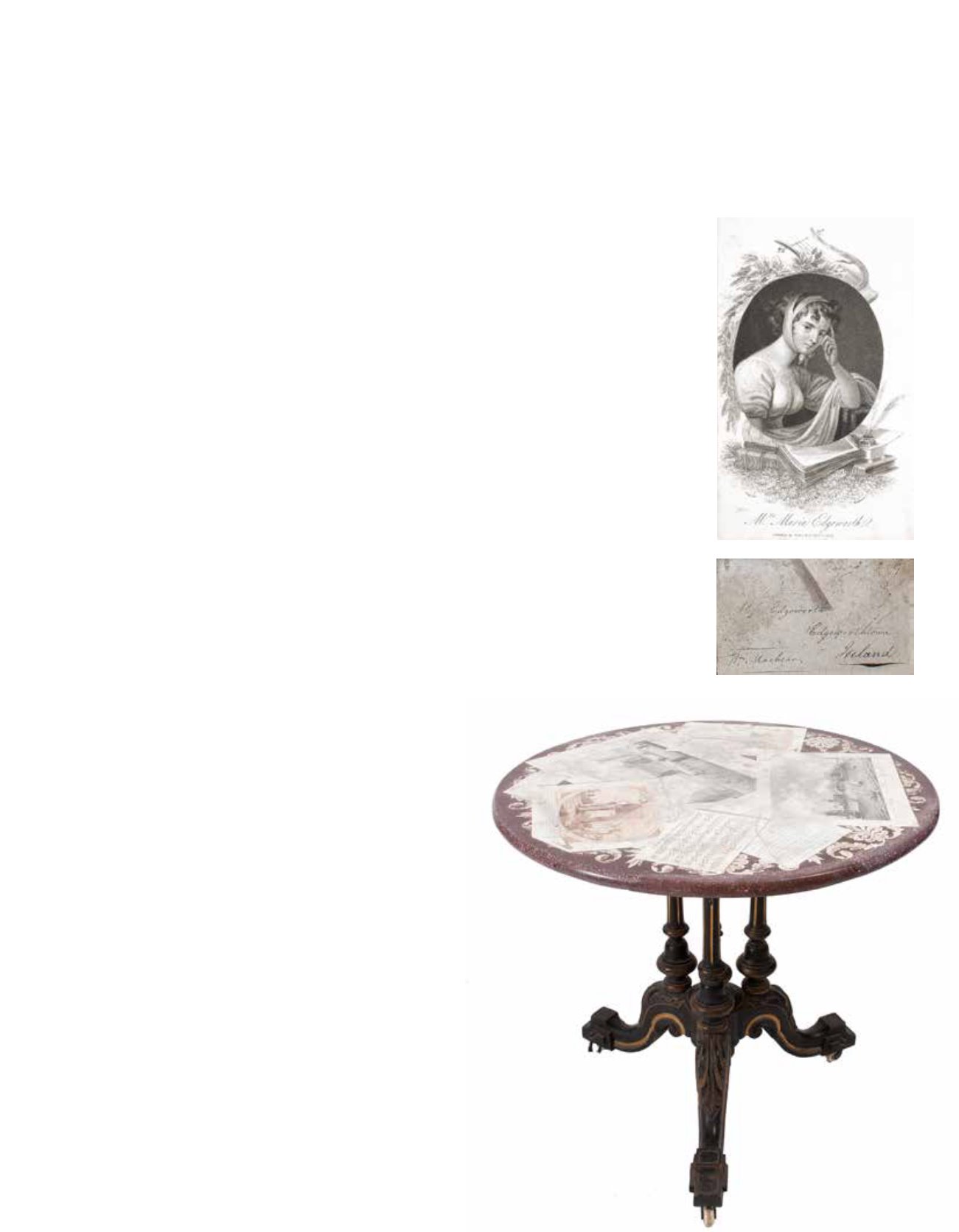
282
744
The Maria Edgeworth Table.
AN EARLY 19TH CENTURY SCAGLIOLA CIRCULAR TOPPED TABLE
An Italian early nineteenth century scagliola trompe l’oeil circular table top by Pietro Della Valle with
signature acanthus leaf and anthemion ground decorated in a naturalistic manner with four scattered
engravings; sheet music for ‘St. Patricks Day in the morning’; an envelope addresses to ‘Miss Edgeworth,
Edgeworthstown, Ireland’ from William Macbean and an extract from Sir Walter Scott’s General Preface to
The Waverely Novels where he commends Miss Edgeworth’s literary accomplishments, dated 1832. 84.5cm
diameter
The circumstance of the gift to Maria Edgeworth of the present lot, presumably by the Livorno merchant,
William Macbean, who signs the envelope, has yet to be described. One fact that may not be a coincidence
is the presence of Edgeworth’s neighbour, Anthony Lefroy, as a banker in Livorno. It is a homage to the
renowned writer Maria Edgeworth (1768-1849) considered the first novelist to depict the generality of human
nature through local observation. Admired by Jane Austen, her greatest influence was on Walter Scott, whose
acknowledgement and appreciation of her he states in the preface to Waverley (1814) and which is recorded in
this table. Walter Scott visited Edgeworthstown in 1825.
Consciously grouped in the present image are Edgeworth, Scott and Moore; from them came the novels
of the Victorian era and the strong re-creation of Scottish and Irish identities and symbols that could fuse
romantically with the Imperial Call stirring the increasingly affluent bourgeoisie. These never quite translated
into republicanism but are, perhaps, today being reassessed with renewed affection and Maria herself has
enjoyed something of a renaissance following the publication of her biography by Marilyn Butler.
Provenance: Edgesworthtown House, sold at auction with the remaining contents 1950s
€40,000 - 50,000
Scagliola was often regarded by scholars as a lesser alternative to
pietra dura however the finest examples of scagliola work from
the 18th century often exceeded that of the hard stone work. It
is a composite material akin to plaster, made from selenite, the
purist form of gypsum. This is calcified, reduced to a fine powder
mixed into a paste and rolled out onto a slab. It is then incised
with channels for the decoration, which are filled with colours
and eventually polished.
(With thanks to J.Cook, author of Masters of the Art of Scagliola)
The scagliola work evidenced here is distinctly from the Livorno
workshops of Pietro Della Valle who was active during the first
half of the 19th century. He was listed by Volpi in his Livorno
guide of 1846 as one of the area’s most significant artists and
was particularly notable for his individualistic style of scagliola
craftsmanship. The sophisticated and ornate decoration and
choice of subjects are typical of Della Valle and here we see a
typical composition of strewn engravings, sheet music, etc on
a mottled ground with a border of acanthus leaves, acorns and
anthemions. A directly comparable table top attributed to Della
Valle was with Carlton Hobbs, New York.


